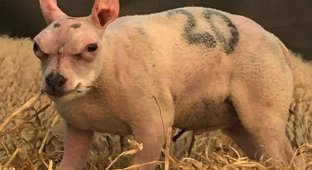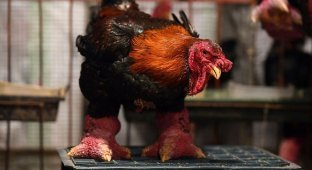Do you know why no one in India is called a rooster or a hen? Because the birds there are not just cock-a-doodle-doo in the backyard, but THIS! Meet the fighting chickens of the Asil breed: they will explain any sideways glance in their direction! 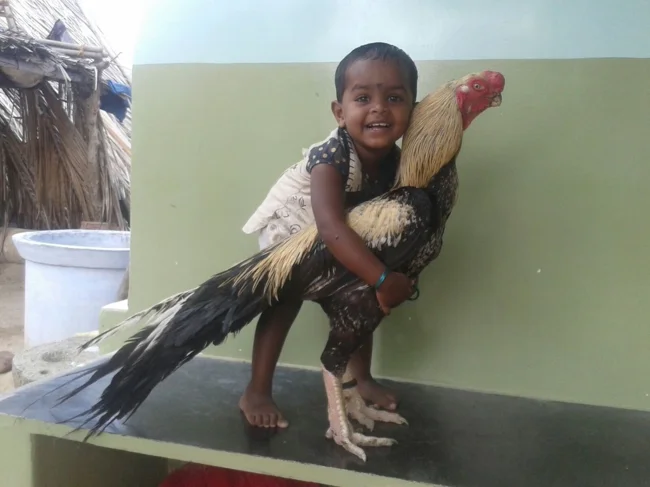
This guy is under reliable protection.
Asil is an amazing legacy of Indian history, which today has taken a wrong turn. Once strong, stocky and powerful birds began to turn into penguin-parrots with a deformed beak and an unnatural body position. Will it be possible to preserve these birds in their original form or is there no place for such breeds in the modern world? 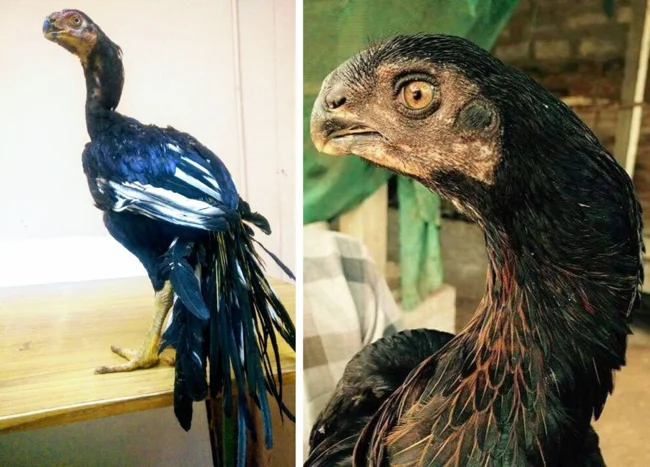
They say that the chicken is the closest relative of the T-Rex. And with this breed, it is not hard to believe.
Let's take it one step at a time. Understanding the origin of the Asil is as difficult as finding a second sock in a closet. Some researchers say that the birds were bred in India about 1000 years ago. Others attribute a history of 4000 years to the birds. If you believe the latter, then Asil may well be the ancestors of many Asian chicken breeds. But whether this is true, no one will ever know. Why? Let's find out further. 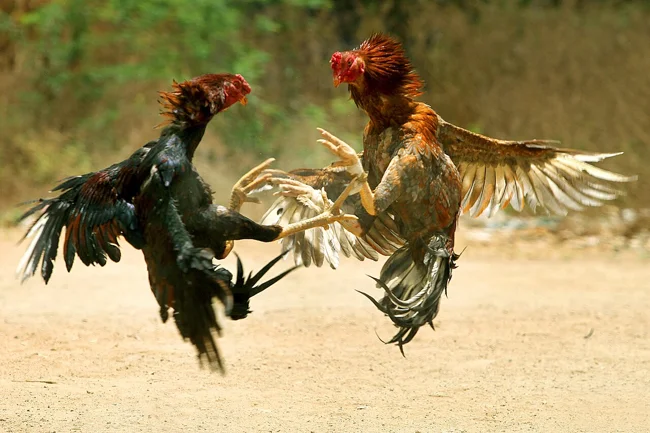
Cockfighting has been banned in India since 1960. In January 2018, the Supreme Court allowed the sport to be held in the traditional way - without the use of knives and blades, and without betting. But underground fights still persist: it is estimated that over $110 million was wagered in the state of Andhra Pradesh over a three-day period in 2019.
Asil was bred for one and only purpose: to participate in cockfights. For this, the strongest, most resilient and characterful birds were selected, because a weak, cowardly cockerel would not bring any profit to the owner. Yes, the fights were not only for entertainment - many chicken owners made money from this. Moreover, the battles did not necessarily end with the death of the loser - what good is a dead bird? Therefore, roosters sometimes had their spurs wrapped with protective tape to minimize damage in battle. 
No matter how high you climb, remember who you climbed with. Oof.
By selecting for endurance, breeders of the past received a fairly rich population of fighting birds. The best representatives of the Asil were imported to Europe and America in the 19th-20th centuries. On their basis, one of the best meat breeds was obtained - the Cornish. And from the Cornish come the well-known broilers! So thank the Indians for their efforts and the Asil for their cool genes - it is thanks to them that there is now a surplus of inexpensive chicken on the market. 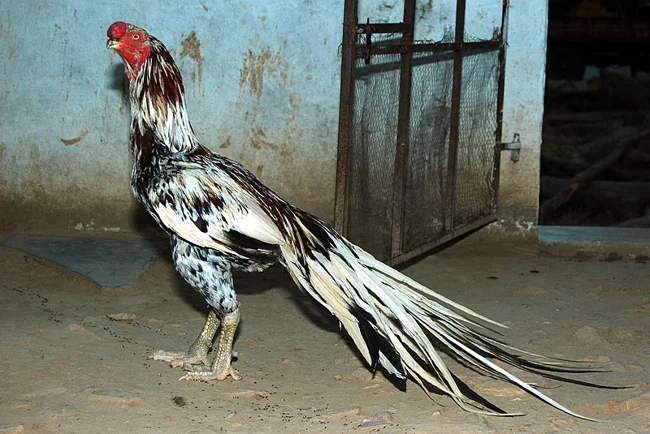
And this variation of the breed looks pretty good.
Well, what happened to the Asil themselves? When cockfighting was banned in India in the 1960s, the breed inevitably began to go down the wrong path. Yes, the bloody fun survived underground, but many breeders still switched to the decorative side and began to breed various variations of the birds. Long-tailed, short-billed, long-legged and other exotic mutants. Today, about 10 varieties of the once single breed are known. Moreover, some of them are even officially registered. 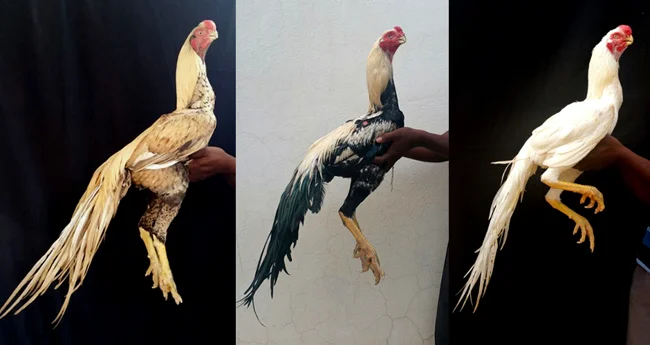
I'm actually a fighting rooster, but it's always nice to be handled.
As of 2007, Asil were considered "not at risk of extinction." In 2021, it changed to "unknown", and in America, the birds were even classified as an endangered species. 
Even their chickens look like they are ready for a fight.
Today, few people risk getting birds because of their fighting nature. The birds are absolutely indifferent to humans, but they cannot stand their fellows. They say that even very small chickens fight among themselves, not to mention adults. Asil roosters have to be kept like prisoners, strictly in solitary cages. The layers of chickens of this breed are not very good: one hen produces about 70 eggs per year. For comparison: highly productive breeds produce up to 300 eggs! 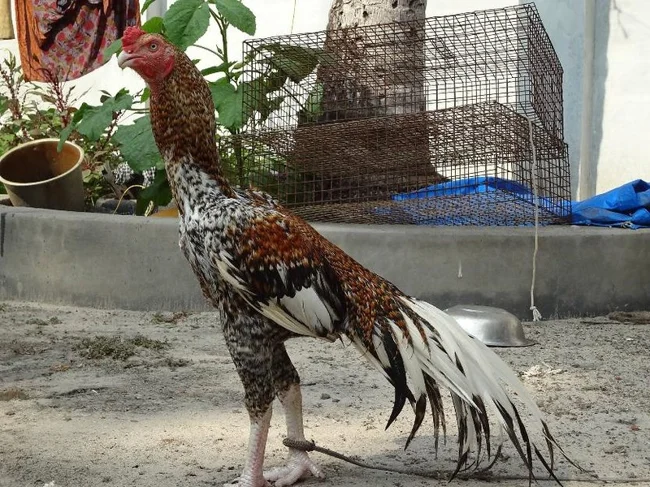
And we usually keep dogs on a chain...
Asil also produces little meat. Roosters weigh an average of 3 kilograms, and hens even less. They grow slowly and uneconomically: compared to meat breeds, Asil spend a lot of feed on weight gain. The only advantage of these birds is their high resistance to diseases and injuries. 
These chickens are 5% feathers, 20% muscle, and 75% hatred for everything around them.
Considering all these characteristics and the ban on cockfighting, most likely, in a couple of decades, Asil will remain only as exotic decorative birds, having forever lost their former power and strength. But, you must admit, these chickens are epic. It's a shame to write them off.
Add your comment
You might be interested in:













